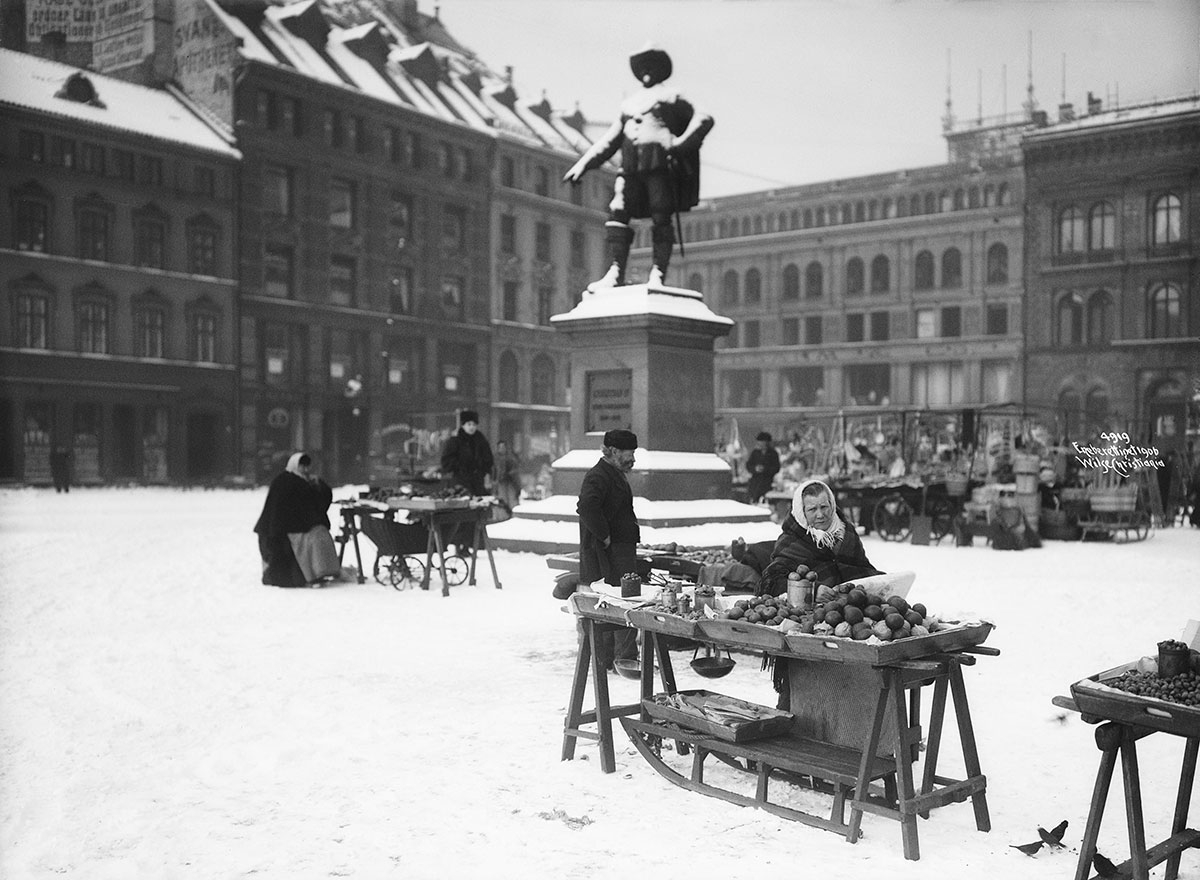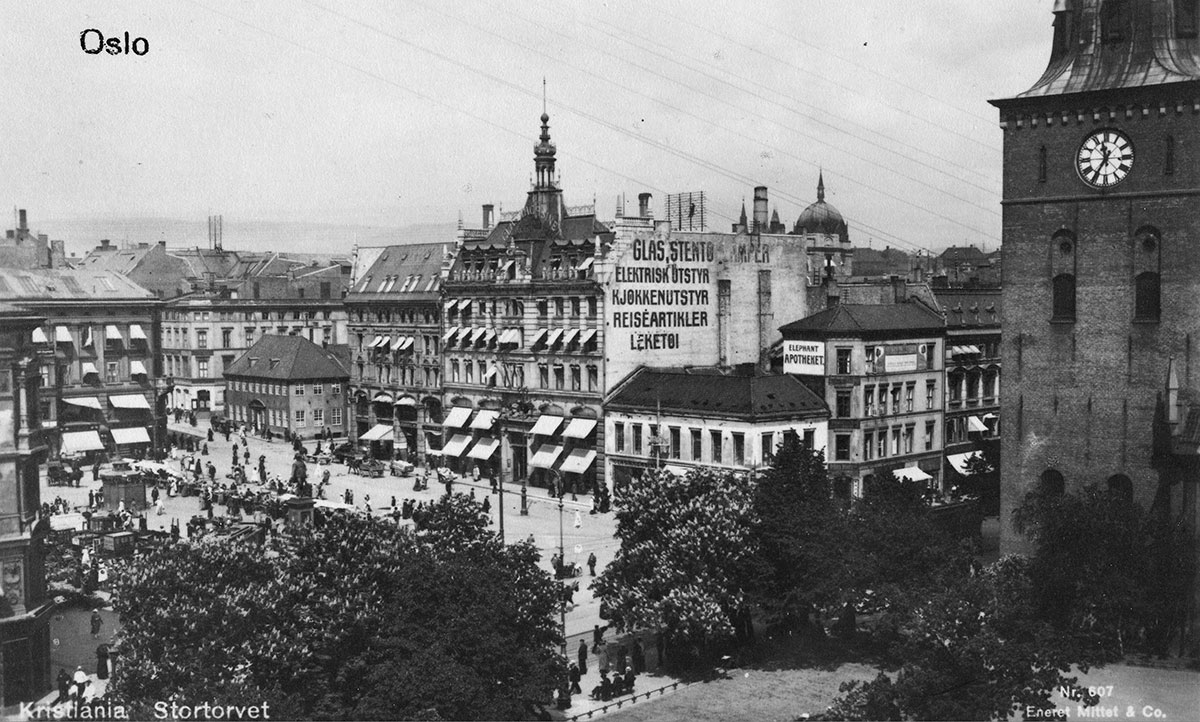The new Christiania
Today there is a statue of the king in the square where he is pointing with his right hand. This statue was unveiled in 1880 and was made by Carl Ludvig Jacobsen.
The only building with "Stortorvet" in its name, Stortorvets Gjæstgiveri, has the address Grensen 1. This building is believed to have been completed around the year 1700 and has changed owners countless times. Even with its many restorations, the building still has a historic feel and stands out among newer buildings in the area.

Oslo Cathedral
Oslo Cathedral is located at the address Stortorvet 1. The cathedral, then called Our Savior's Church, was consecrated in 1697 and is the main church in the Oslo diocese. The weddings of the heirs to the throne and royal burials have taken place in the church after Norway became independent in 1905.
Apart from the castle church in Akershus, Oslo Cathedral was the only church in Christiania for over 150 years. The church gained its status as a cathedral in 1950. The interior of the cathedral is largely characterized by the Baroque style.
In 1699, the interior was equipped with a magnificent altarpiece and pulpit. These were carved by a Dutch master who later became a role model for wood carvers in the valleys of Eastern Norway. The altarpiece in the cathedral marks the beginning of the acanthus baroque in Norway, which is a style period characterized by carvings of leaves in the acanthus family.

Christiania Glasmagasin
Christiania Glasmagasin is located on Stortorvet 9–12. "Glasmagasinet" established itself at this address in 1862 but has a long history before this. The company has its beginnings in 1739, with a grant from Christian VI (King of Denmark-Norway) to Det Norske Kompagni.
The company's intention was to acquire rights to almost all Norwegian natural resources. The king wanted to establish a glass factory in Norway, as Denmark lacked natural conditions for glass production. In the first 100 years after its establishment, the company contributed to the construction of several glassworks in Eastern Norway.
After several rounds of changes of ownership, Christiania Glasmagasin became a retail outlet at Jernbanetorget in 1856, where the majority of the product selection came from Hadeland Glassverk. The business had to be moved in 1862 due to an extension of the railway. The choice fell on the then (Stor)Torvet 10, and is the place where Christiania Glasmagasin is still located today.

External films
Watch the film "Stortorvets basarer" on digitaltmuseum.no
Watch the film "Avsløring av Vår Frelsers kirkes bronsedører" on digitaltmuseum.no
Watch the film "Oslo Sporveier fylder 60 år" on digitaltmuseum.no